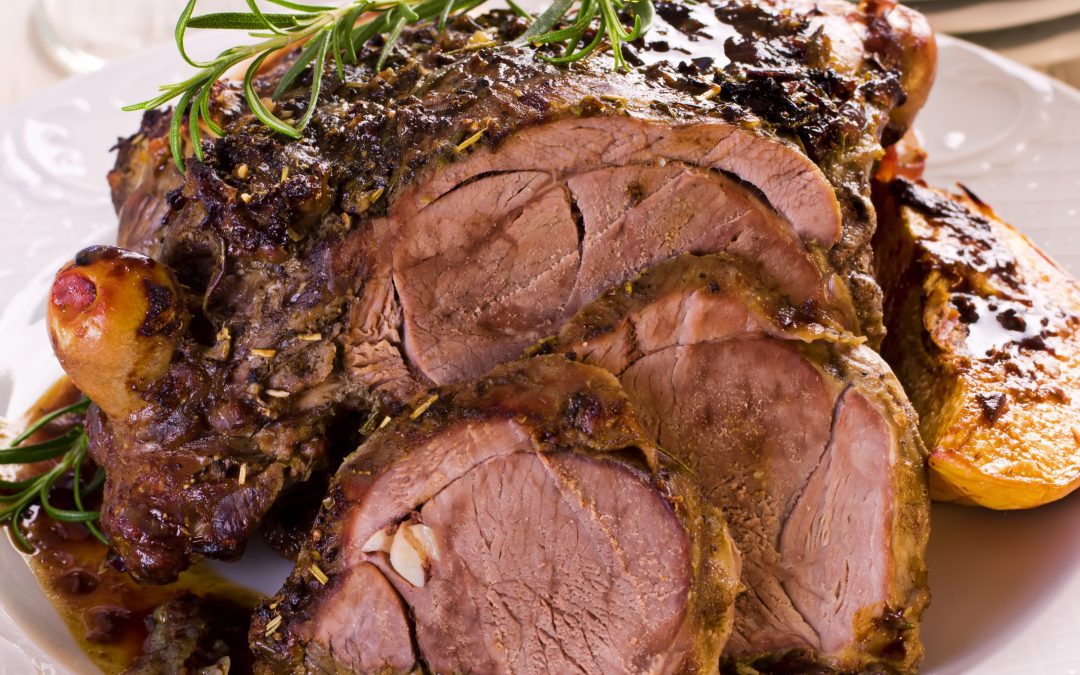Passover and Easter meals are always about family and friends – and it is an ideal time to wow everyone with your knowledge on the best wines to match with the foods of the Spring. The challenge to any meal with a large number of people is finding foods that fit all tastes and dietary requirements. In this article, we explore possible Spring menus, and provide some general rules for matching wines, with recommendations from our previous tastings.
- Wines to use while waiting and noshing
- Brunch wines
- Wines with poultry & fish
- Wines with meats
- The finishing touch – wine with dessert and after the meal
For Starters, Let’s Try….
We are very fortunate to live in a climate where we can serve our guest outside for most of the year – but this is especially true in the Spring. We like to use wines with a bit of acidity and a bit of tropical flavors – a refreshing treat that can sipped on its own, or used with mildly flavored appetizers. The general rule of thumb is to keep it light when starting out. You will focus mostly on white wines such as sauvignon blanc, albarino, gruner veltliner, or pinot grigio, but there are some nice, easy drinking reds such as gamay and beaujolais which work well as starters.
Our favorite go-to wines for our guests as starters are:
Vermentino from Tuscany
Vermentino is grown primarily in Sardinia and Tuscany, but the Tuscan version has more character on its own. The flavors tend to be a bit bolder, the wine has a bit more body, and the acidity is balanced to make these wines very food friendly – but the wine is also delightful on its own. Our favorites are Antonio Sanguineti, Poggioargentiera (Maremma region of Tuscany), and Poggio al Tesoro Solosole (Bolgheri region of Tuscany). See our review of Vermentino wines for more detail.
New Zealand Sauvignon Blanc
Another crowd pleaser are the sauvignon blancs from New Zealand. While some of the NZ sauvignon blancs tend to be heavy on the citrus fruit, and sometimes too tart or too much mineral notes to drink alone, we find a number of nicely balanced wines that work well on their own. Our favorites are Spy Valley, Toro Bay, Dashwood, and Dog Point.
Lugana
Lugana sits on the border between Lombardy and the Veneto on the south end of Lake Garda, part of the fertile Po Valley plain which is just a stones throw to Northern Italy’s lake country and the glacial foothills of the Alps. The major grape of this region is Trebbiano – which is not a very well regarded varietal in Italy. But the trebbiano wines from Lugana are exciting, with lots of fruit expression, and nice acidity which matches with many foods.
Our favorite Lugana is from San Benedetto (2011), priced at about $15. Others to try are Ottella (about $25), Alpha Zeta (about $16), and Olivini (about $17). Check out our full review of Lugana wines on our website.
Food Pairings
We like to pair the fuller-bodied white wines from Tuscany with goat cheese and fruit, with cheeses from Tuscany (especially the Pienza fresca), with salads that have a stone-fruit component (especially the poached plum recipe on our website), or with a non-tomato flatbread or pizza. Both the NZ sauvignon blanc wines and the vermentino wines work well with cured or lightly smoked salmon. Use the NZ sauvignon blanc wines along with salads, especially when using a bits of orange or grapefruit.
What makes Lugana so special is its food-friendly quality – it works well with crisp calamari, then somehow will play well with a spicy arrabiatta sauce – the bright acidity from the Lugana was able to match with even this strong flavor. Lugana can literally spill over to the main course, especially with poultry.
The Brunch Crowd
Brunch is all about fun & casual – which immediately makes us think “Sparkling.” There are so many varieties and versions to choose from, including sparklers from the US, Italy, France, and Spain. We are particularly impressed with the Spanish Cava wines that are appearing more and more on menus around the country. Most likely you will already have your favorites – but here are our favorites:
Prosecco
Our favorite sparkler is Prosecco – it’s so easy to drink on its own, and matches with so many foods you’ll see at brunch: salty lox, rich eggs benedict, fresh oysters, even pizza (yes, we often serve pizza for breakfast). We will often make mixed drinks, adding a splash of Prosecco at the end for fizz and fun. Producers such as Mionetto, Zardetto, and Ruggeri make outstanding Prosecco at great prices.
Lambrusco
We can 
Poultry and Fish Pairings
Duck is fun – duck is sexy – duck is delicious.
And there is nothing like matching duck with pinot noir. But pinot noir works very well with other poultry, and is especially nice with grilled vegetables drizzled with aged balsamic vinegar.
And there are many other really fun wine choices with poultry, and with fish. Generally, you want a medium to full bodied white (chardonnay, chenin blanc, or viognier), or a light to medium bodied red with good acidity (sangiovese, barbera, chinon, or pinot noir). Most importantly, remember this: don’t let the old prejudice rule your choice of matching whites with fish and chicken.
Pinot Noir

Viognier
We love viognier wines, and we really think it is under appreciated in the US. The grape is fragrant and powerful grown in the Languedoc-Rousillon and Rhone Valley regions of France, as well as in the US, Australia, New Zealand, and other countries. You can find nice, reasonably priced viognier wines in Washington and Oregon (such as Charles Smith, Mark Ryan, and Alban). But the best version is in Condrieu (France), where it is the only grape used. You’ll pay more, but it is worth it. Look for Domaine Georges Vernay, Domaine du Monteillet, and Francois Villard.
Bring on the Red Meat
Red meat is easy – all you need is a full bodied red from any country. The fall-back for most folks is cabernet sauvignon or cab blends, which you can find from the US, Italy, France, Australia, Chile, Argentina, and New Zealand at good price points. There are so many great Malbec wines priced under $25 that you can spend a life time tasting them all. And don’t forget merlot – despite the bad rap it got in the movie Sideways. Some of the best wines in the world are merlot wines.
Since this category is the easiest to pair (rich, full-bodied red wines), we’ll focus on a few types of red wines that we drink on a regular basis.
Super Tuscan Wines

Other Italian Reds
Mocali Morellino di Scansano ($15) is an Italian red wine made in the hilly environs of the village of Scansano, in the Maremma region of coastal Tuscany. The name may come from the morello cherry, a dark red cherry with great tartness and acidity. It has balanced acidity, a fragrant aroma with lots of red berry, and a long lasting flavor of cherry. We enjoyed this wine on its own, and with the pizza and pasta served during the evening.
Rosso di Spicca from Tenuta Le Vilette is an Ovietano Rosso – while it is hard to find, it is worth the effort at $15 per bottle. We coined it as the Chateauneuf de Pape of Italy because it is typically made from a blend of many Italian red grapes, some common and others not so common, as well as French varieties grown in Italy. So, let’s start the litany of of grapes that go into this wine: Montepulciano, sangiovese, aleatico, caniolo rosso, ciliegiolo, cabernet franc, cabernet sauvignon, merlot, and pinot nero (pinot noir). We’ve served it with steak, pork, pasta having strong flavors (pancetta and leeks, or a veal-based red sauce), but also used it with fish (monkfish with a red wine and mushroom sauce).
And For Dessert We’re Serving…
Back in February, we did a blog on pairing chocolates with wine – there were many wines in that tasting, so take a look through the list if you’re using chocolate: http://theseriousfoodie.net/wine-chocolate-pairings/.
You’ll want to look for a dessert wine that will work with the type of dessert you’ll be serving – are there aromas and flavors of some element/ingredient of your dessert? Plum, apricot, citrus are the easiest flavors to find. Many dessert wines, especially sherry, will have nutty aromas and flavors.
We like the citrus notes that we find in ice wines from the Niagara area, or the apricot notes in the vin santo wines of Italy. If you can find New Zealand dessert wines (such as from Cloudy Bay), you will also get exotic fruit aromas and flavors (kiwi, passion fruit, pineapple).
Try a light to medium bodied Sherry (semi-dry), Orange Muscat, or Asti Spumante when serving a light vanilla cake.
And you can never go wrong with Port – especially when pairing with stone fruits.







